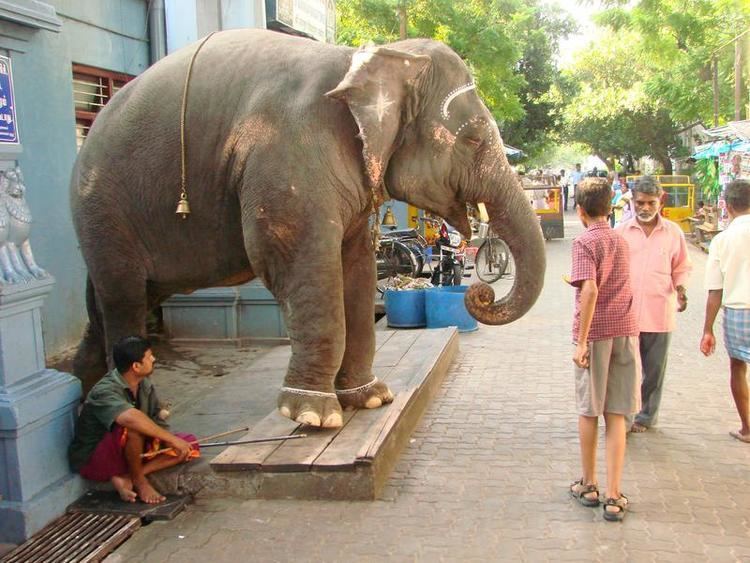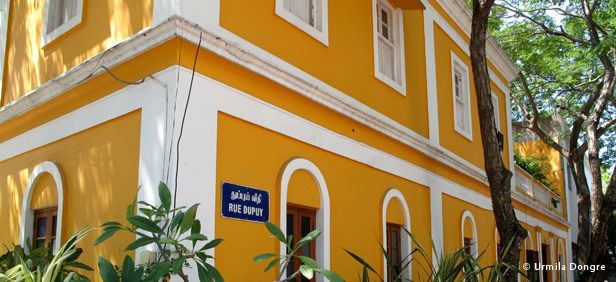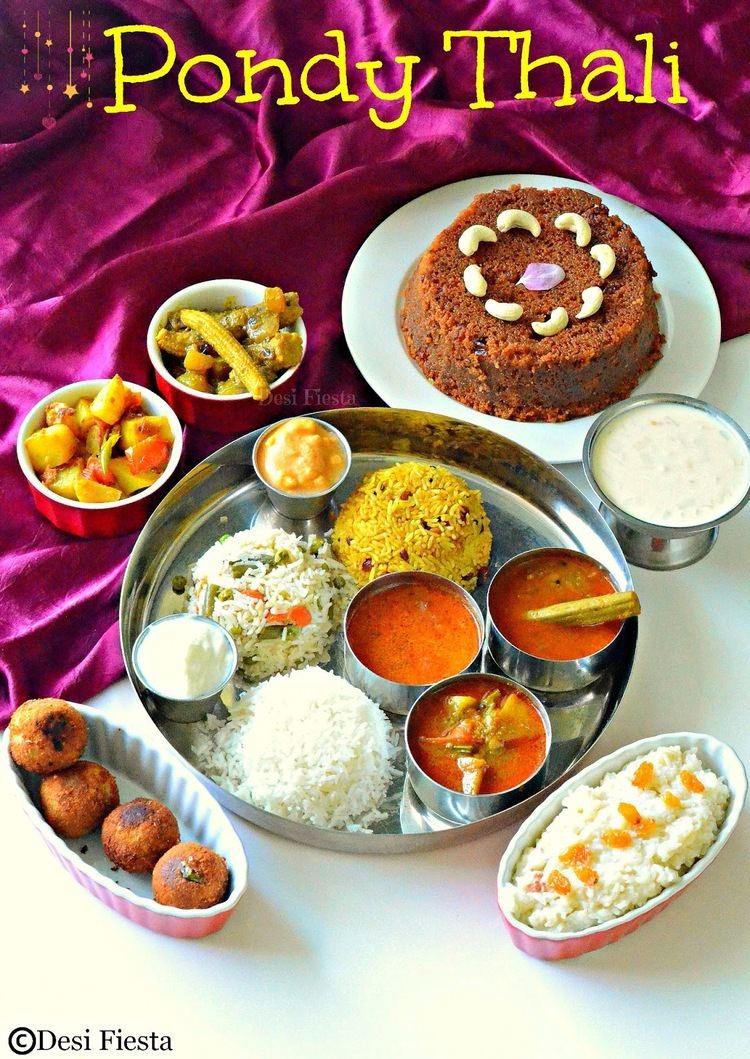Languages spoken www.py.gov.in Capital Population 1,244,464 | Area 492 km2 Founded 7 Jan 1963 Governor A. K. Singh | |
 | ||
Colleges and Universities Pondicherry University (Pondicherry), Jawaharlal Institute of Postgraduate Medical Education and Research (Pondicherry), Mahatma Gandhi Medical College & Research Institute (Pondicherry), Sri Venkateshwaraa Medical College Hospital and Research Centre (Pondicherry), Pondicherry Institute of Medical Sciences (Kalapet) | ||
Chief Minister N. RangaswamyAINRC | ||
Map of Puducherry
Puducherry ; literally New Town in Tamil), formerly known as Pondicherry (; is a union territory of India. It was formed out of four exclaves of former French India, namely Pondichéry (Pondicherry; now Puducherry), Karikal (Karaikal), Mahé and Yanaon (Yanam). It is named after the largest district, Puducherry. Historically known as Pondicherry (Pāṇṭiccēri), the territory changed its official name to Puducherry (Putuccēri) on 20 September 2006.
Contents
- Map of Puducherry
- India travelogue episode 23 explore puducherry with aashka goradia
- History
- Geography
- Districts of Puducherry
- Demographics
- Government and administration
- Special administration status
- Official languages
- Official symbols
- French influence
- Economy
- Fisheries
- Tourism
- Rail
- Road
- Air
- Education
- In Popular culture
- References

Puducherry lies in the southern part of the Indian Peninsula. The areas of Puducherry district and Karaikal district are bound by the state of Tamil Nadu, while Yanam district and Mahé district are enclosed by the states of Andhra Pradesh and Kerala respectively. Puducherry is the 29th most populous and the third most densely populated state/union territory in India. It has a GDP of ₹0.21 lakh crore (US$3.3 billion) and ranks 27th in India.

India travelogue episode 23 explore puducherry with aashka goradia
History
The earliest recorded history of Puducherry can be traced to the 2nd century AD. The Periplus of the Erythraean Sea mentions a marketplace named Poduke (ch 60). G. W. B. Huntingford suggested this might be a site about 2 miles from the modern Puducherry, which was possibly the location of Arikamedu (now part of Ariyankuppam). Huntingford noted that Roman pottery was found at Arikamedu in 1937. In addition, archaeological excavations between 1944 and 1949 showed that it was "a trading station to which goods of Roman manufacture were imported during the first half of the 1st century CE".

In 1674, Pondicherry (Pondichéry) became a French colony of the French colonial empire. Together with Chandernagor (already French since 1673), Mahé (since 1721), Yanam (Yanaon) (since 1731), Karaikal (Karikal) (since 1739) and Masulipatam (1760), it formed the French colony of French India, under a single French governor in Pondicherry, although French rule over one or more of these enclaves was repeatedly interrupted by British occupations. The territories of French India were completely transferred to the Republic of India de facto on 1 November 1954, and legally de jure on 16 August 1962, when French India ceased to exist, becoming the present Indian constituent union territory of Pondicherry, still combining four coastal enclaves.
Geography
The union territory of Puducherry consists of four small unconnected districts: Puducherry district (293 km2 (113 sq mi)), Karaikal district (160 km2 (62 sq mi)) and Yanam district (30 km2 (12 sq mi)) on the Bay of Bengal and Mahé district (9 km2 (3.5 sq mi)) on the Arabian Sea, covering a total area of 492 km2 (190 sq mi). Puducherry and Karaikal have the largest areas and population, and are both enclaves of Tamil Nadu. Yanam and Mahé are enclaves of Andhra Pradesh and Kerala, respectively. Its population, as per the 2011 Census, is 1,244,464.
Some of Puducherry's districts are themselves amalgamations of non-contiguous enclaves, often called pockets in India. The Puducherry district is made of 11 such pockets, some of which are very small and entirely surrounded by the territory of Tamil Nadu. Mahé district is made up of three pockets. This unusual geography is a legacy of the colonial period with Puducherry retaining the borders of former French India.
All four districts of Puducherry are located in the coastal region. Five rivers in Puducherry district, seven in Karaikal district, two in Mahé district and one in Yanam district drain into the sea, but none originates within the territory.
Districts of Puducherry
Demographics
Hinduism is the major religion with 87.3% of the population adhering to it. Other religions include Christianity (6.2%) and Islam (6%).
Government and administration
Puducherry is a Union Territory of India rather than a state, which implies that governance and administration falls directly under federal authority. However, Puducherry is one of only two union territories in India (the other being Delhi), that is entitled by a special constitutional amendment to have an elected legislative assembly and a cabinet of ministers, thereby conveying partial statehood.
The Centre is represented by the Lieutenant Governor, who resides at the Raj Nivas (Le Palais du Gouverneur) at the Park, the former palace of the French governor. The central government is more directly involved in the territory's financial well-being unlike states, which have a central grant that they administer. Consequently, Puducherry has at various times, enjoyed lower taxes, especially in the indirect category.
Special administration status
According to the Treaty of Cession of 1956, the four territories of former French India territorial administration are permitted to make laws with respect to specific matters. In many cases, such legislation may require ratification from the federal government or the assent of the President of India.
Article II of the Treaty states:
"The Establishments will keep the benefit of the special administrative status which was in force prior to 1 November 1954. Any constitutional changes in this status which may be made subsequently shall be made after ascertaining the wishes of the people."
Official languages
Tamil remained the official language according to the "Traité de Cession" (Treaty of Cession) 1956 and the Government of Union Territories Act, 1963. According to the treaty, "the French language shall remain the official language of the Establishments so long as the elected representatives of the people shall not decide otherwise". Tamil, Telugu and Malayalam are the three official languages used region-wise. French didn't lose its official status even after the adoption of "The Pondicherry Official Language Act 1965" (Act No. 3 of 1965). This act stated that "the Tamil language shall (...) be the language to be used for all or any of the official purposes of the Union territory." It also provides for the use of the Malayalam and Telugu languages in the Mahé and Yanam districts. The law also states that English "may be used for all or any of the official purposes of the Union territory".
Official symbols
On 16 April 2007, the government of Puducherry announced that the following were to be its state symbols:
French influence
The plan of the city of Pondicherry is based on the French grid pattern and features perpendicular streets. The town is divided into two sections: the French Quarter (Ville Blanche or 'White Town') and the Indian quarter (Ville Noire or 'Black Town'). Many streets retain French names, and villas in French architectural styles are a common sight. In the French quarter, the buildings are typically in French colonial style, with long compounds and stately walls. The Indian quarter consists of houses lined with verandas and with large doors and grilles. These French- and Indian-style houses are preserved from destruction by an organisation named INTACH. The French language can be seen on signs and menus, and heard in Puducherry. Puducherry has residents with French passports: Most are of Indian descent and a small number are of non-Indian descent. At the time of Puducherry's transfer to India in 1954, residents were given a choice to retain their French citizenship or to gain Indian citizenship. Those with French passports today are generally descendants of residents who chose to keep their French citizenship.
Several monuments in the city pertain to the French period. A French Consulate is in Puducherry, along with cultural organisations. Another important building is Le Foyer du Soldat, a veterans legion hall for soldiers who served in French wars. Among the French cultural organisations, the French Institute of Pondicherry, the Puducherry Centre of the École française d'Extrême-Orient and a branch of the Alliance Française are noteworthy. A French high school (Lycée français de Pondichéry) operates under the aegis of the French Minister of National Education.
Economy
The gross state domestic product of Puducherry, at market prices estimated by Ministry of Statistics and Programme Implementation with figures in crores of Indian rupees grew from 184 to 25,819 crore rupees from 1980– 2014.
Fisheries
The potential for fisheries is substantial in the Union Territory. The four regions of the Union Territory have a coastline of 45 km with 675 of inshore waters, 1.347 hectares (3.33 acres) of inland water and 800 ha of brackish water. 27 marine fishing villages and 23 inland fishing villages host a fishermen population of about 65,000 of which 13,000 are actively engaged in fishing. Tanks and ponds are also tapped for commercial fish rearing.
Tourism
Puducherry is one of the most popular tourist spots for national and international tourists. Out of 274 Paadal Petra Sthalam Shiva Temples, the Puducherry region is owning 1 temple and in Karaikal regions it is having 4 temples which itself a clear proof that the Puducherry territory is also a part of the spiritual and sacramental of Shaivism principles. Besides in Villianur, Bahour and in so many areas of Puducherry region there are so many Shiva temples built up during the golden period of King Chola empire which gives immense pleasure to be proud of that our Puducherry territory was administered under the control of such golden rulers. So visiting such ancient temples would definitely give more spiritual vibrations to the tourists. For every year the Puducherry territory administration also declares official Holiday for performing the grand Car Festivals to the temples situates in Villianur, Veerampattinam that too the Lieutenant Governor of Puducherry and the Chief Minister of Puducherry also participates in such grand Car Festival. Besides in Kizhoor, Puducherry which is 22 km. away from Puducherry therein on 18-10-1954 a referendum was conducted to ensure that whether the erstwhile French establishments of Puducherry shall continue with French administration or to merge with Indian Union and finally decided to merge with Indian Union. Puducherry was the residence of Sri Aurobindo (1872–1950) and the Sri Aurobindo Ashram still operates from Puducherry. A unique experimental city Auroville, the brainchild of the Mother, whose inhabitants are drawn from all parts of the world is situated on the outskirts of the city. There are several temples, churches, monuments, parks and mosques which attract tourists.
Rail
Puducherry is connected by a railway branch line from the five-way junction at Viluppuram and Chennai. The railway line is a broad gauge line with 16 originating Trainsand 17 Terminating Trains
Road
Puducherry has a network all weather metalled roads connecting the territory. Puducherry has a road length of 2,552 km (road length per 4.87 km2), the highest in the country.
Air
Puducherry Airport is situated at Lawspet. The Puducherry Government upgraded the airport in 2012 with a new terminal building and apron to accommodate larger aircraft. The new terminal building was inaugurated in January 2013 and scheduled flights to Bengaluru were launched. A MoU has been signed with Airports Authority of India for expansion of Puducherry Airport in two phases. Karaikal Airport is a planned greenfield airport and will be the India's first airport to be built entirely with private capital.
Education
Puducherry has a literacy rate of 86.55%. Pondicherry University is a central university located in Puducherry. Other colleges include Jawaharlal Institute of Postgraduate Medical Education & Research (JIPMER), Indira Gandhi Medical College and Research Institute (Government of Puducherry), Mahatma Gandhi Medical College and Research Institute, National Institute of Technology, Puducherry, Perunthalaivar Kamarajar Institute of Engineering and Technology, Pondicherry Engineering College, Achariya College of Engineering & Technology ACET, Rajiv Gandhi College of Engineering and Technology, Rajiv Gandhi College of Veterinary and Animal Sciences, Christ institute of technology, Sri Manakula Vinayagar Engineering College, Shri Krishnaa College of Engineering & Technology, Sri Ganesh College Of Engineering and Technology and Sri Venkateshwaraa Medical College Hospital and Research Centre.
